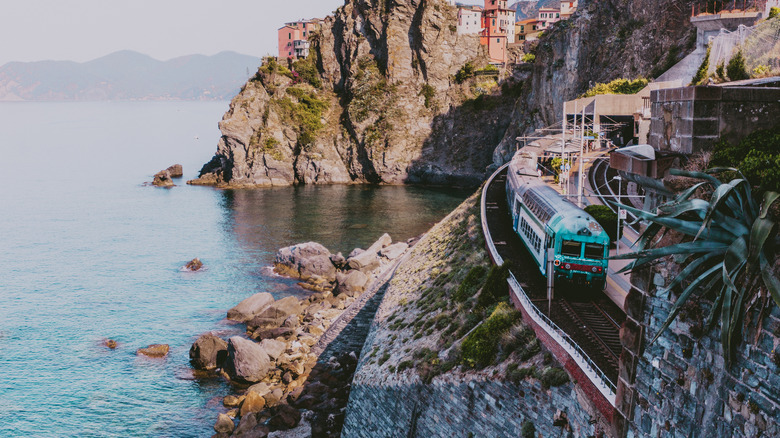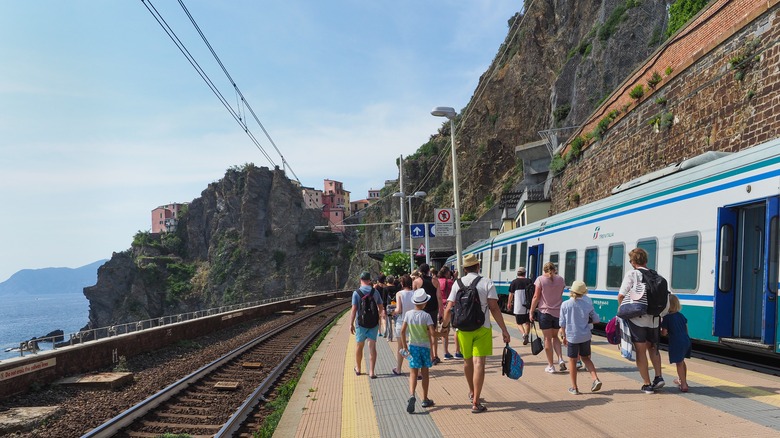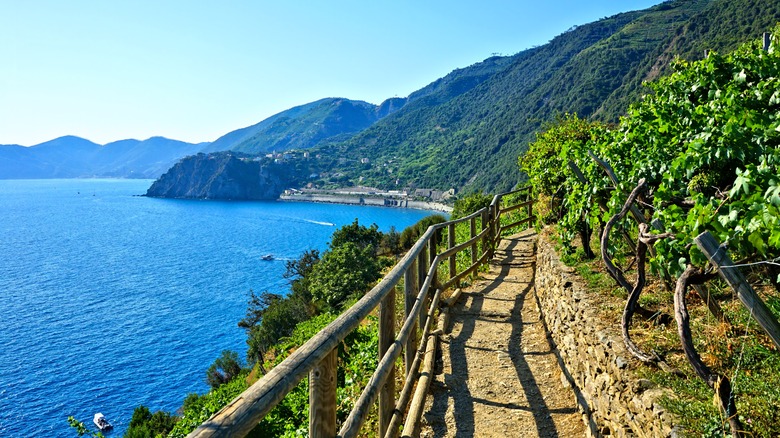The Best Way To Tell If The Cinque Terre Card Is A Necessity Or A Waste Of Money
The five coastal villages that comprise the Cinque Terre in northwest Italy are known for their terraces of grape vines and olive groves, their views of the Ligurian Sea, and the colorful dwellings, restaurants, and shops that climb from the water straight up the rugged mountainsides. While the villages are known under one name — Cinque Terre, or "Five Lands" — each has its own distinctive characteristics. Monterosso al Mare contains the best-known beach, which is dotted with its signature green and orange-striped umbrellas during the summer months. Elsewhere, colorful Riomaggiore serves as a perfect base for your visit and boasts a cliff-edge trail that offers stunning sea views.
Between those two villages — Monterosso al Mar to the north and Riomaggiore to the south — are the three other towns: Vernazza, Corniglia, and Manarola. Vehicles are forbidden in the center of each town, but Cinque Terre is easy to navigate by foot or rail. The five villages are all connected by hiking paths and the Cinque Terre Express train.
In order to ease travel and better manage tourism, the Cinque Terre National Park Authority and Trenitalia (Italy's primary train operator) created a card that offers unlimited train travel between the five villages. Because you can also purchase individual passes for each train ride, it's important to calculate before you go whether the card, called the Cinque Terre Treno MS Card, is a worthwhile investment. If you're planning to ride the train between villages more than four times in one day, you'll cover the cost of the card — making it the practical choice.
What is the Cinque Terre Card?
The Cinque Terre Treno MS Card allows cardholders to ride as many times as they want in second-class cars on regional trains from La Spezia (a town south of Cinque Terre) to Levanto, located north of the five villages. Cards can be purchased on the Trenitalia website ahead of time or at ticket offices or self-service machines in Italian train stations. They come in one-day, two-day or three-day options.
A one-day card costs between 19.50 and 32.50 euros per adult, depending on the time of year you visit. Surge pricing occurs in the months of July and August, as well as weekends and holidays throughout the year when there's a higher volume of tourists. The cheapest times to visit are weekdays in March, April, May, and October.
A single train ticket between Cinque Terre villages costs 10 euros during peak season and 5 euros on the cheapest days. When calculating the cost of single fares against the price of a one-day Cinque Terre Treno MS Card, you can conclude that you'd need to ride the train at least four times in one day to not be wasting money with the card.
Factoring in the Blue Path
Besides taking the train four times in one day, there's another case in which the Cinque Terre Treno MS Card is worth the cost: if you're combining train travel with a hike on the Blue Path, a 7.5-mile hiking trail. The Blue Path, a popular draw for tourists, allows visitors to hike along the Italian coast in Cinque Terre.
Anyone looking to hike the Blue Path must have either the Cinque Terre Treno MS Card or the Cinque Terre Trekking Card. The trekking card, which grants access to the hiking trail but doesn't include train travel, sells for 7.50 euros per day or 15 euros during peak dates. You can purchase trekking passes at all entry points onto the Blue Path, at tourist information areas in the train stations of each of the five villages, or on the Cinque Terre National Park Authority website.
If you plan to hike the Blue Path and take two train rides in one day during peak times — when entry to the path is 15 euros, and each train ride is 10 euros — the Cinque Terre Treno MS Card would be worth the cost. During the low season for tourism, you would need to take three train rides and walk the Blue Path to make the Cinque Terre Treno MS Card a cost-effective purchase.


